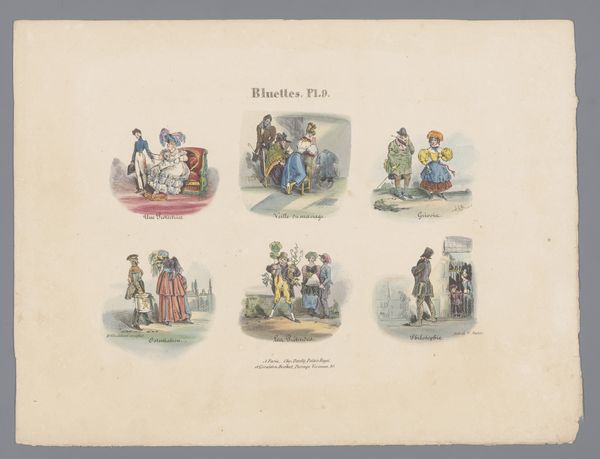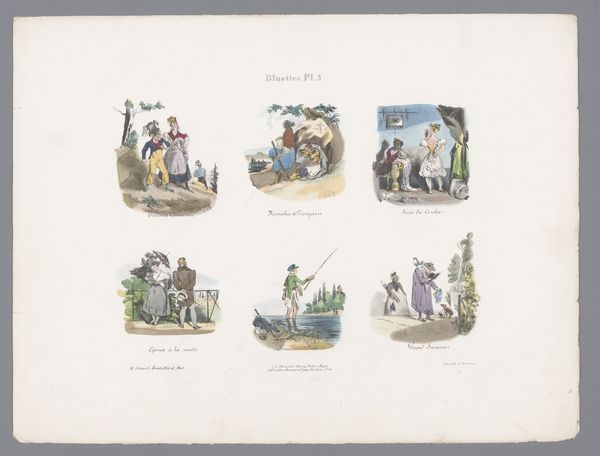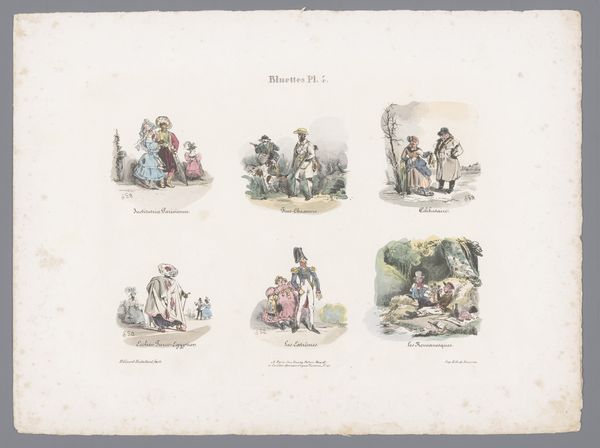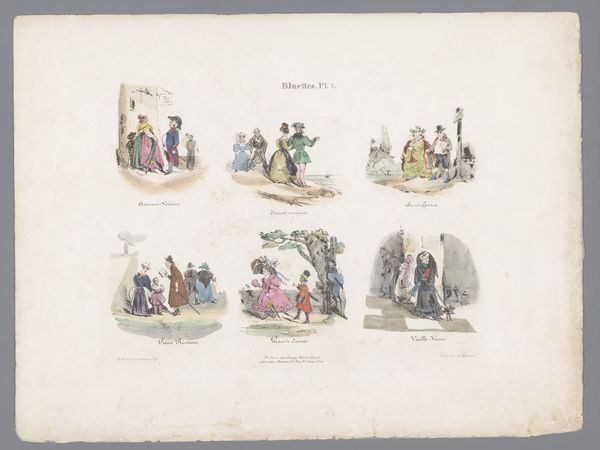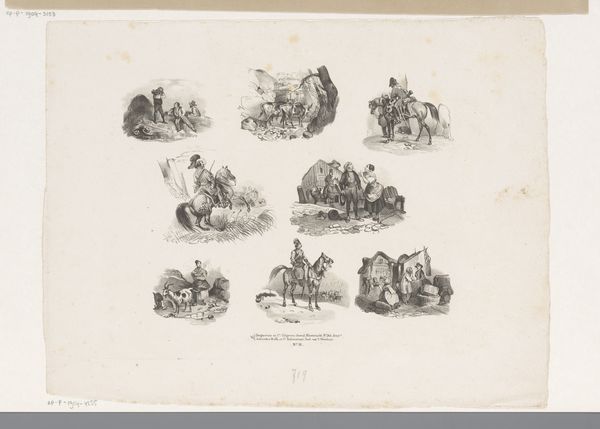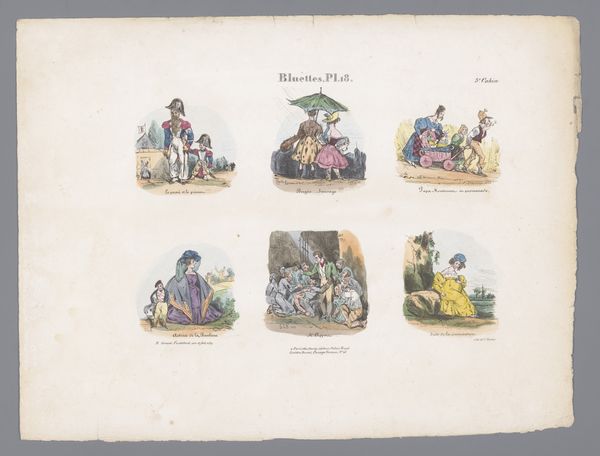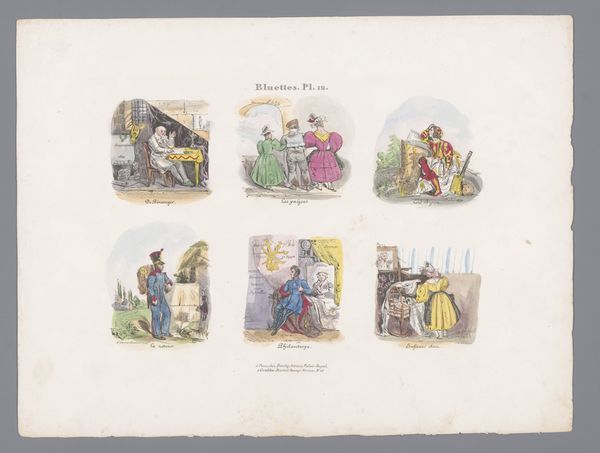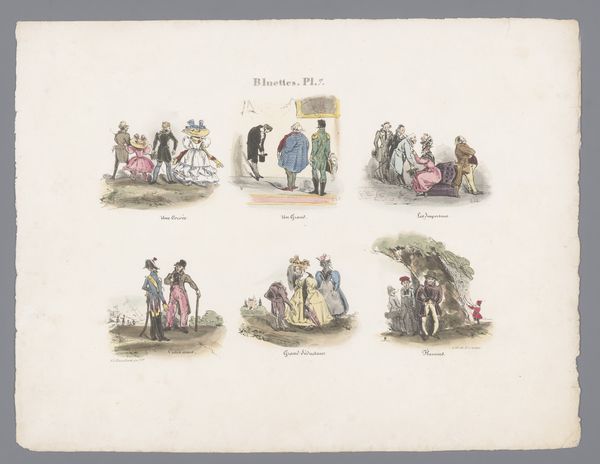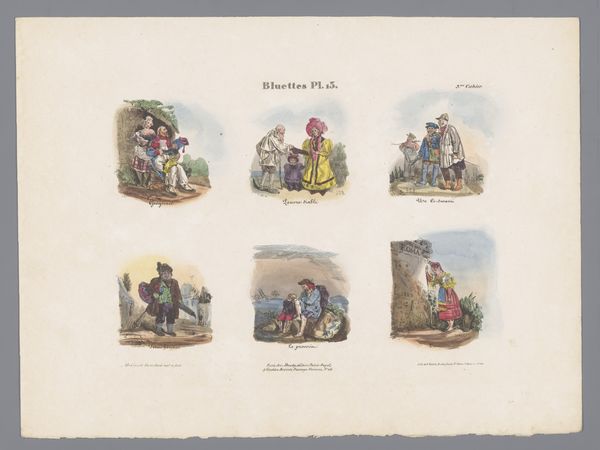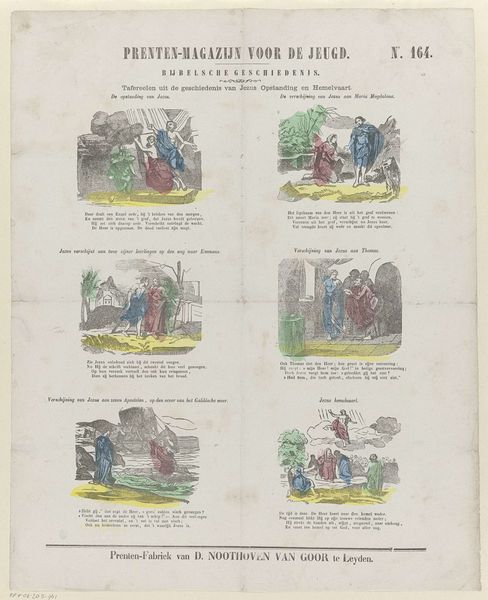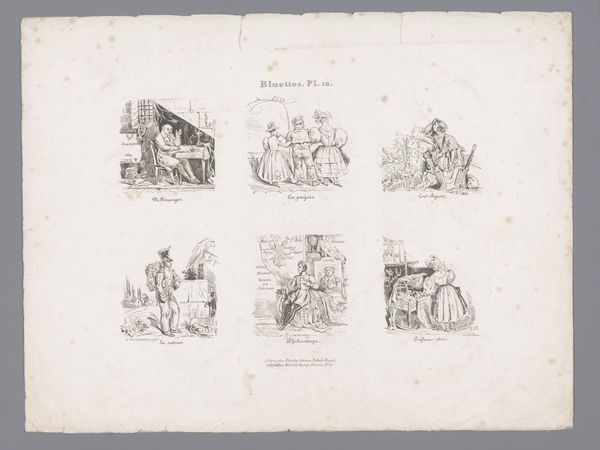
drawing, coloured-pencil, print, watercolor
#
drawing
#
coloured-pencil
#
water colours
#
narrative-art
# print
#
watercolor
#
coloured pencil
#
romanticism
#
genre-painting
Dimensions: height 278 mm, width 361 mm
Copyright: Rijks Museum: Open Domain
Curator: Let's explore this intriguing print by Henri-Gérard Fontallard, created in 1829, entitled “Zes scènes met diverse personen”, or "Six Scenes with Various People.” It’s made with drawing, coloured pencil and possibly a printmaking process on paper. Editor: Initially, it strikes me as a whimsical observation of social life. There's a slightly melancholy tone underlying the quaint scenes—perhaps it's the limited palette that makes it feel somewhat wistful? Curator: What's particularly interesting is the printmaking aspect; each scene, though appearing unique, would have been carefully planned for reproduction. It suggests a democratisation of imagery and hints at the rise of print culture during that period. Look at the lines, probably done by engraving or etching. Think about the labor that goes into reproducing these little scenes for a mass audience. Editor: Yes, it is interesting when thinking about audience and accessibility. Fontallard positions these figures within different social contexts, so we’re immediately invited to think about power dynamics. Is it intended as social commentary, critiquing those relationships? Curator: Possibly. Consider the materials as part of that statement. It’s not a grand oil painting meant for a wealthy patron. A print like this could reach a broader demographic and contribute to the shaping—and perhaps critiquing—of bourgeois values and taste. Editor: Precisely. And the "scenes with various people"— the emphasis on diverse interactions signals a burgeoning interest in collective identity. Each vignette speaks to questions about class and custom, maybe about the expectations of conduct within a very specific period and region. Curator: The narrative element too is key. Romanticism embraced storytelling; and a print like this might function almost as a visual short story for contemporary consumers of art. How might it be consumed and disseminated in print culture? Editor: It makes me think about its purpose in social life. Was this used to communicate subtle political messaging? Or perhaps to cement specific notions about how one interacts in a city setting. There's clearly an engagement with the human figure amidst societal evolutions. Curator: Absolutely. It demonstrates how something seemingly simple opens into layers of context around material, manufacture, and modes of seeing. Editor: Examining these six small worlds has given me cause to ponder on larger societal constructions and what art can tell us about those intricacies.
Comments
No comments
Be the first to comment and join the conversation on the ultimate creative platform.



